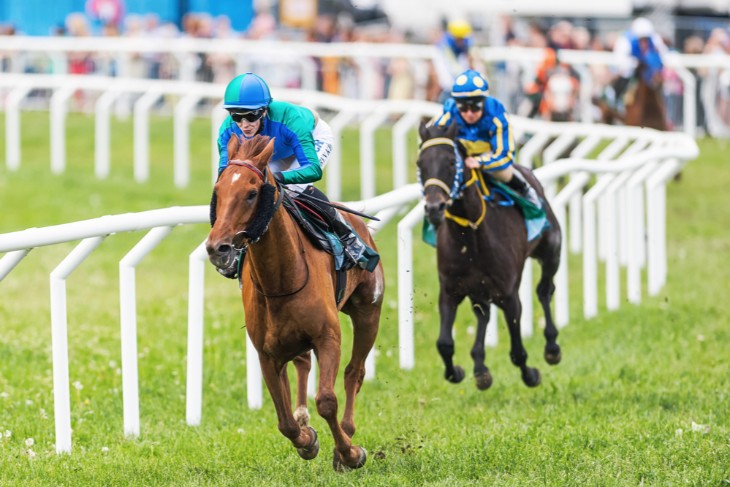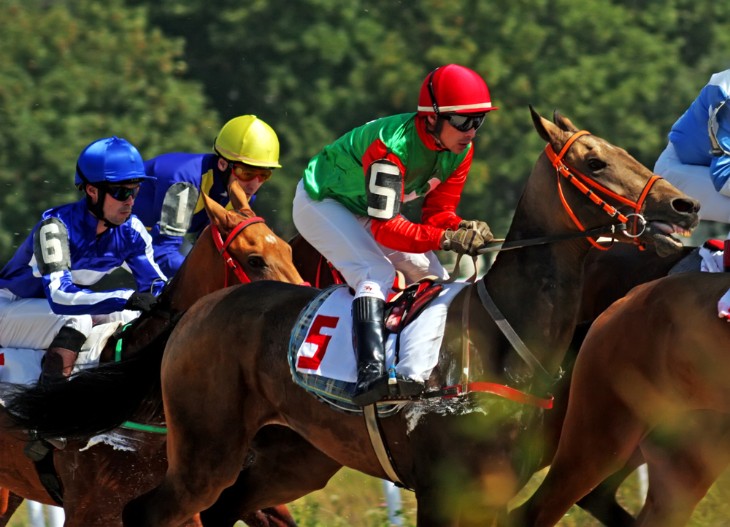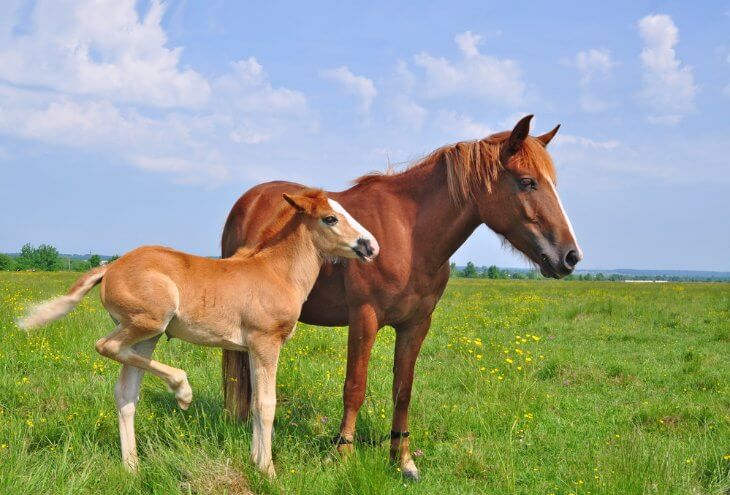- Tracing the Ancestry: Unravelling the Family Tree
- A Glimpse into Horse Racing Heritage
- Breeding Strategies and Lineage Considerations
- The Impact of Pedigree on a Horse's Performance
- Nature vs. Nurture: The Role of Genetics and Training
- Iconic Racing Dynasties: Tales of Legendary Families
- Studying Successful Bloodlines: Case Studies of Prominent Horses
- Conclusion
A pedigree is a comprehensive family tree meticulously documenting a horse's lineage, chronicling the champions and performers that came before. It reveals the intricate interplay of genes that sculpt a racehorse's physical attributes, temperament, and ability. Unlocking the secrets held within a pedigree is akin to unravelling a code that predicts future prowess on the racetrack.
At its core, a pedigree outlines the immediate family – the sire (father), dam (mother), and their respective parents. This foundation branches outward, generation by generation, forming an intricate tapestry of bloodlines and ancestral influences. Every name etched onto the pedigree represents a piece of the genetic puzzle that shapes the horse's destiny.
Pedigrees serve as a roadmap for breeders, trainers, and owners, guiding them in their pursuit of equine excellence. By studying these ancestral records, they can make informed decisions about breeding strategies, training regimens, and race selections tailored to each horse's unique strengths and predispositions.
- Pedigrees are akin to genetic blueprints, revealing the intricate tapestry of a horse's ancestry.
- They provide valuable insights into a horse's potential for specific racing disciplines, such as sprinting, middle-distance, or endurance events.
- Analysing pedigrees allows for strategic breeding decisions, optimising the chances of producing champions.
Tracing the Ancestry: Unravelling the Family Tree
Delving into a horse's pedigree is a journey through time, uncovering the legacies and triumphs of generations past. The process begins with the horse in question, then winds back through its direct lineage, revealling the sires and dams that contributed to its genetic makeup.
Pedigree analysis hinges on identifying the presence of legendary ancestors – the icons and trailblasers who left an indelible mark on the sport. These revered sires and dams passed on their superior genes and racing prowess, creating dynasties of champions that continue to shape the sport's landscape.
As the ancestral trail deepens, distinct patterns emerge, shedding light on a horse's predisposition for specific racing disciplines. Some bloodlines may excel in lightning-fast sprints, while others thrive in gruelling endurance tests, their stamina and determination etched into their DNA.
Each generation uncovered paints a vivid picture of a horse's racing heritage, from the grandest stages of triumph to the hallowed tracks where legends were born. These stories of victory and perseverance become interwoven with the horse's own narrative, inspiring awe and admiration for the sport's rich tapestry.
- Tracing a horse's ancestry can reveal the presence of legendary sires and dams that have shaped the sport's history.
- Distinct bloodlines may excel in specific racing disciplines, such as speed for sprinting or endurance for long-distance events.
- Uncovering a horse's racing heritage connects it to the triumphs and legacies of champions past, adding depth and significance to its own journey.
A Glimpse into Horse Racing Heritage
Every pedigree is a window into the rich heritage of horse racing, a tapestry woven with the stories of champions and icons that have transcended time. Each ancestor carries its own legacy, from the grandest stages of victory to the hallowed turf where legends were forged.
Tracing a horse's lineage reveals the bloodlines that have triumphed in prestigious events such as the Kentucky Derby, the Royal Ascot, and the Melbourne Cup. These ancestors have etched their names in the annals of racing history, their victories resonating through generations of equine athletes.
However, a horse's racing heritage is not solely defined by wins and accolades. It encompasses the diverse talents and attributes that have shaped the breed over centuries. Some ancestors may have been revered for their unwavering tenacity and stamina, while others were celebrated for their blinding speed and agility. Each piece of the puzzle adds depth and nuance to a horse's potential, creating a multifaceted portrait of athletic prowess.
Beyond the trophies and records, a pedigree offers a glimpse into the enduring bond between humans and horses – a partnership forged through dedicated breeding, training, and a shared passion for excellence. It celebrates the legacy of those who have dedicated their lives to the pursuit of equine perfection, shaping the future of the sport one generation at a time.
- Pedigrees connect horses to the triumphs and legacies of legendary racehorses from iconic events like the Kentucky Derby and Royal Ascot.
- A horse's racing heritage encompasses a diverse array of talents and attributes, from speed and agility to endurance and tenacity.
- Pedigrees celebrate the enduring bond between humans and horses, honouring the dedication of breeders and trainers who shape the sport's future.

Breeding Strategies and Lineage Considerations
The art of breeding in horse racing is a delicate dance between science and intuition, where pedigree analysis plays a crucial role. By studying the lineages and bloodlines of potential sires and dams, breeders can make informed decisions to create offspring with the most desirable traits for racing success.
One key consideration is the compatibility of racing lines. A well-balanced pedigree that combines speed and endurance, often referred to as a "classic" pedigree, is highly sought after for horses competing in middle-distance and long-distance races. Conversely, for sprinters, a pedigree with a concentration on raw speed and acceleration becomes the priority.
Inbreeding, where closely related horses are bred together, can be a strategic move to reinforce desirable traits and intensify specific characteristics. However, this practice also carries the risk of amplifying genetic issues, which must be carefully managed and monitored.
On the other hand, outcrossing introduces fresh genetic diversity into a bloodline, reducing the chances of inheriting genetic defects. This approach can dilute the influence of exceptional ancestors but may also unveil new and exciting combinations of traits.
Throughout history, the quest for the perfect breeding formula has driven breeders to meticulously analyse pedigrees, experiment with various pairings, and continually refine their strategies. This ongoing pursuit of excellence has shaped the evolution of horse racing pedigrees, propelling the sport towards a future where the boundaries of equine performance are constantly pushed.
- Breeders carefully assess the compatibility of racing lines to optimise the chances of producing successful racehorses.
- Inbreeding can reinforce desirable traits but also increases the risk of genetic issues, while outcrossing introduces fresh genetic diversity.
- The pursuit of the perfect breeding formula has driven the evolution of horse racing pedigrees, shaping the sport's future.
The Impact of Pedigree on a Horse's Performance
A horse's pedigree is more than just a historical record; it is a powerful predictor of its potential performance on the racetrack. The genetic makeup inherited from ancestors plays a pivotal role in shaping a horse's abilities, temperament, and racing style.
Certain bloodlines are renowned for producing horses with an innate gift for blistering speed, making them well-suited for sprint races where explosive acceleration is paramount. On the other hand, lineages emphasising stamina and endurance are more likely to excel in gruelling long-distance events, where the ability to sustain peak performance over an extended period is crucial.
Understanding these inherent strengths allows trainers and owners to tailor race schedules and training regimens to optimise each horse's chances of success. A sprinter may thrive with intensive speed work and shorter, high-intensity sessions, while a distance runner may benefit from longer, lower-intensity workouts focused on building endurance.
However, genetics alone do not dictate a horse's destiny on the racetrack. The environment, training, and nurturing they receive also play a significant role in shaping their development and performance. Even a horse with a celebrated pedigree may struggle to reach its full potential without proper care, coaching, and a supportive environment.
- Certain bloodlines are known for producing horses with exceptional speed or endurance, influencing their suitability for specific racing disciplines.
- Understanding a horse's inherent strengths based on its pedigree allows trainers to tailor race schedules and training regimens accordingly.
- While genetics lay the foundation, the environment and training a horse receives also significantly impact its performance and ability to reach its full potential.
Nature vs. Nurture: The Role of Genetics and Training
The age-old debate of nature versus nurture finds a prominent stage in the world of horse racing. On one side, genetics provide the blueprint for a horse's athletic prowess, dictating its physical attributes, natural talents, and predispositions. On the other hand, training, experience, and the human-animal bond play a pivotal role in honing those innate abilities and shaping a horse into a winning competitor.
A horse born with an abundance of natural speed may require specialised training techniques to harness and control that raw power effectively. Explosive sprint workouts, starting gate practice, and developing a keen mind for the racetrack can transform that genetic gift into a formidable force on the track.
Conversely, a horse blessed with exceptional endurance might benefit from a more gradual approach, building up its aerobic capacity and strengthening its musculoskeletal system to sustain peak performance over longer distances.
The environment in which a horse is raised can also profoundly impact its development and temperament. A nurturing and supportive stable atmosphere, with experienced handlers who understand the importance of positive reinforcement, can instill confidence and a strong work ethic in a young racehorse.
- Genetics provide the foundation for a horse's athletic abilities, while training and environment shape those innate talents.
- Specialised training approaches are tailored to optimise a horse's natural strengths, whether it's raw speed or endurance.
- A nurturing and supportive environment can foster a positive mindset and work ethic in a racehorse, enhancing its performance potential.

Iconic Racing Dynasties: Tales of Legendary Families
Within the annals of horse racing history, certain families have etched their names in glory, creating legacies that transcend generations. These iconic racing dynasties are the stuff of legend, inspiring awe and admiration with their tales of triumph and perseverance.
One such dynasty is that of the indomitable Secretariat, the legendary Triple Crown winner whose record-breaking performances in 1973 cemented his status as an immortal icon. Sired by the mighty Bold Ruler, Secretariat's bloodline has produced a lineage of champions, including the illustrious A.P. Indy and the formidable Storm Cat.
The Sadler's Wells dynasty, founded by the eponymous stallion renowned for his incredible stamina and versatility, has left an indelible mark on the sport. His illustrious descendants, including Galileo, Montjeu, and High Chaparral, have dominated prestigious races like the Epsom Derby, the Prix de l'Arc de Triomphe, and the Breeders' Cup Turf, carrying on the family's legacy of excellence.
These dynasties represent more than just exceptional genetics; they embody a passion for perfection and an unwavering dedication to breeding and training superior athletes. Their stories weave together triumph, heartbreak, and the enduring bond between humans and horses, captivating generations of racing enthusiasts.
- Iconic racing dynasties like Secretariat and Sadler's Wells have produced lineages of champions that continue to shape the sport.
- These dynasties represent not just exceptional genetics but also a dedication to breeding and training superior athletes.
- Their stories celebrate the enduring bond between humans and horses, inspiring awe and admiration in generations of racing enthusiasts.
Studying Successful Bloodlines: Case Studies of Prominent Horses
In the ever-evolving landscape of horse racing, certain bloodlines consistently demonstrate their dominance, producing exceptional racehorses generation after generation. The study of these successful bloodlines provides invaluable insights into the winning formula that lies within their genetic makeup.
The dazzling bloodline of Native Dancer, the American Thoroughbred known as the "Grey Ghost," is a prime example. His unique blend of speed and stamina made him a force to be reckoned with, and his descendants inherited these coveted traits. Celebrated names like Mr. Prospector, Raise a Native, and the legendary Northern Dancer carry on Native Dancer's legacy, continuing to influence the breed's evolution.
In the realm of sprinters, the bloodline of Danehill stands as a beacon of speed and agility. This exceptional Australian stallion sired an astonishing number of Group 1 winners, earning him the title of one of the most influential sires of the 20th century. His offspring have excelled in races of all distances, displaying a versatility that sets them apart from their peers.
The success of these bloodlines is not mere coincidence but rather the result of careful breeding strategies and the perpetuation of exceptional traits from one generation to the next. Trainers, breeders, and analysts meticulously study these pedigrees, seeking to unlock the secrets that consistently produce outstanding racehorses.
- The bloodline of Native Dancer, known for its blend of speed and stamina, has produced influential descendants like Mr. Prospector and Northern Dancer.
- Danehill's progeny have excelled in sprints and longer races, showcasing the versatility of this influential Australian sire's bloodline.
- Studying successful bloodlines allows breeders and trainers to identify the winning formula that consistently produces exceptional racehorses.
Conclusion
The world of horse racing is a tapestry woven with the stories of champions, legacies, and the enduring pursuit of equine perfection. At the heart of this captivating sport lies the pedigree – a genetic blueprint that holds the key to unlocking a racehorse's true potential. From the grandest stages of triumph to the hallowed breeding grounds where legends are born, pedigree analysis serves as a guiding light, illuminating the path to greatness.








